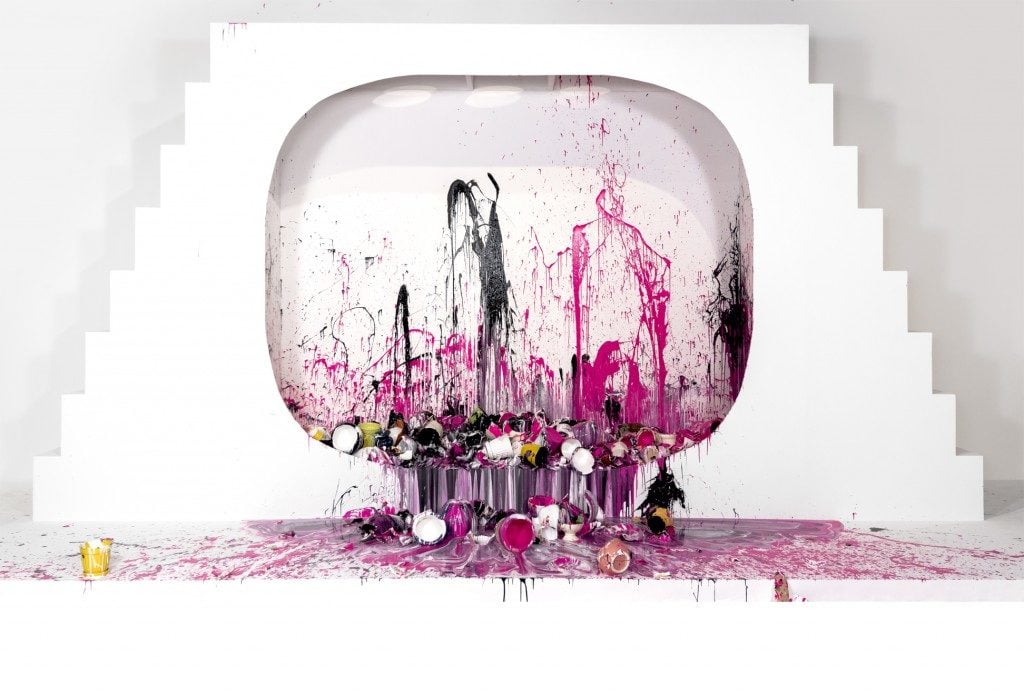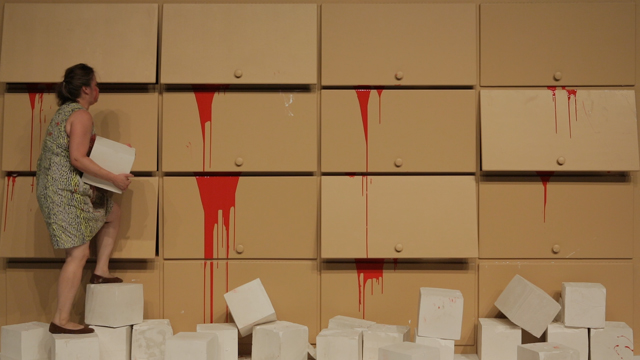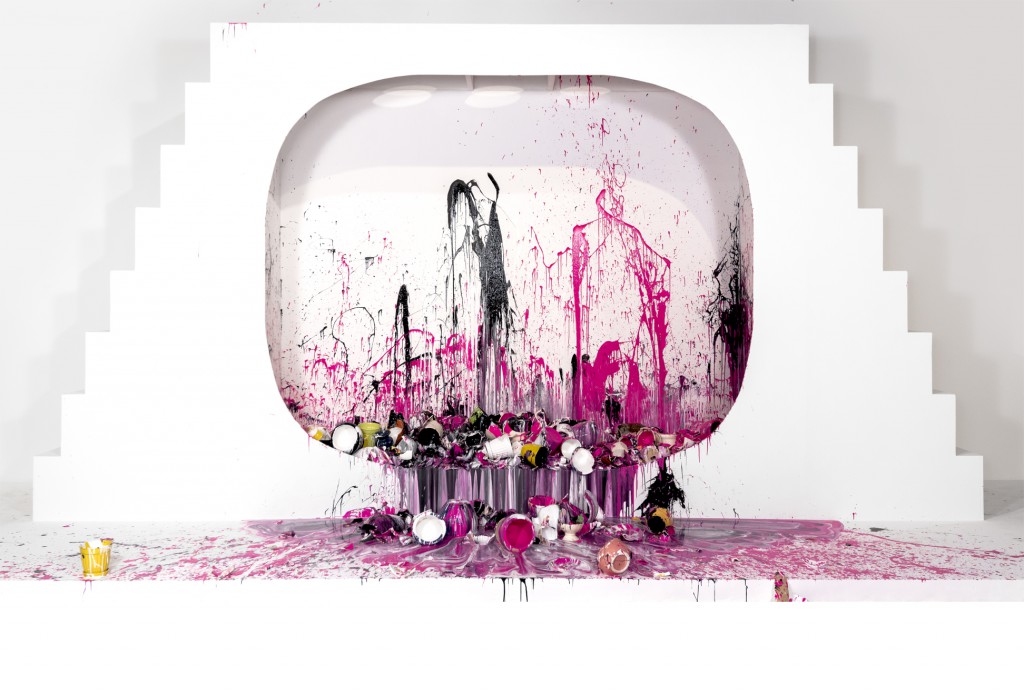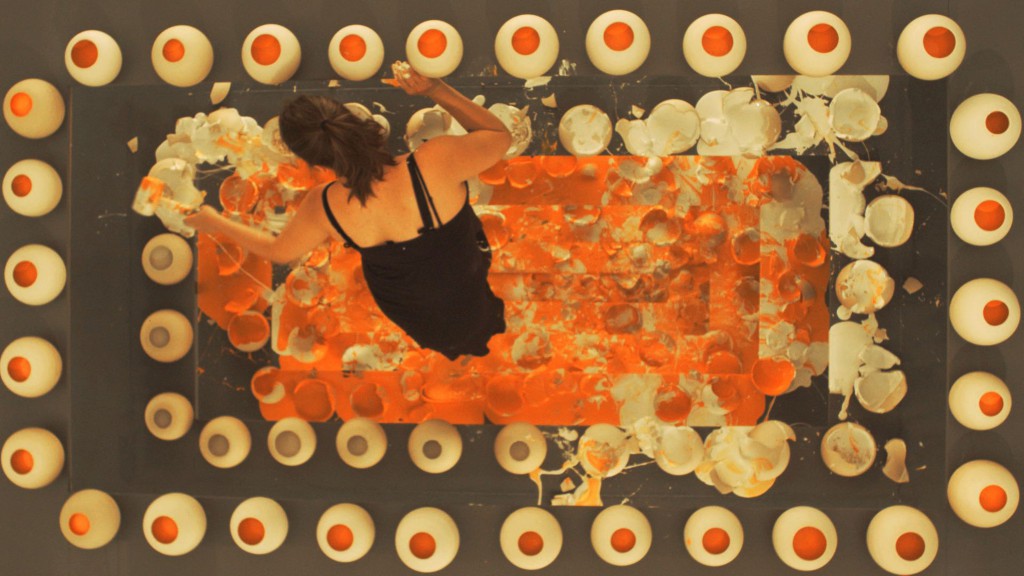People
artnet Asks: Kate Gilmore
The genre-bending artist is featured in the Aldrich Museum's 50th anniversary show.

The genre-bending artist is featured in the Aldrich Museum's 50th anniversary show.

Cait Munro


Kate Gilmore, Top Drawer, 2014, Stony Brook University.
Kate Gilmore is an artist of many media, including video, sculpture, photography, and performance. Often, her genre-bending work brings together several modes of creation to produce multiple products through one action. Her art is intensely physical, often involving repetitive tasks, dangerous situations, or the destruction of forms. Much of her work functions as a critique of traditional gender roles and the expectations of what it means to be a female artist.
Gilmore’s work has been exhibited at the 2010 Whitney Biennial, the Brooklyn Museum, White Columns, the J. Paul Getty Museum, MoMA Ps1, and several other leading art institutions. She is featured as part of the Aldrich Museum’s 50th anniversary exhibition, which opened on October 19. The anniversary show places iconic, historical pieces that are representative of the early collection of the museum’s founder, Larry Aldrich, alongside and in conversation with works by contemporary artists. Her work will be displayed with a piece by Richard Serra.
In the 50th anniversary show at the Aldrich Museum, your work will be displayed alongside Richard Serra’s. What can you tell us about the relationship between your work and his?
As a sculptor, we all have to address our history. Richard Serra is a huge part of that history. I don’t know another artist who does mass, intimidation, and brutality quite like him. I don’t know if I could tell you what the exact “relationship” of my work to Richard Serra’s work is, but I can tell you that he is extremely influential, and I have learned a lot about materials and their power through looking at his work.
What are some adjectives you would use to describe yourself as an artist?
This is much easier when other people do this! I would say that I am committed, focused, thoughtful, and a bit (maybe more than a bit) stubborn.

Kate Gilmore, Love ‘Em and Leave ‘Em, 2013, MOCA Cleveland.
Many of your works involve breaking things. What does the act of destruction mean to you?
I would say that I use destruction as a way to make things. To use something in a way that it is not supposed to be used to create something, perhaps, more spectacular. To show the insides, the shards, the mistakes—to me is much more interesting than the piece as a whole.
Where does your creative process begin and how does it progress, given the extremely site-specific nature of your work?
My process always starts with an idea of what the installation will look like. I then start to think about what the camera will see and figure out how to make all that happen—what action needs to happen to make the vision come through. Then I pray to the art gods that it all works out.

Kate Gilmore, Built to Burst, 2011, Braverman Gallery.
When did you know that you wanted to be an artist?
I figured out that I wanted to be an artist when I was in college. I was not one of those artists that always knew that art was their calling. I had to figure it out. When I did, there was no turning back, but it took me time to learn what I could do with art and how to say what I wanted to say.
If you could live in any decade, what would it be and why?
I like the time I am living in now despite the atrocities around the world, the injustice, the pain. It is what I know, so it is what I have to work with.
When not making art, what do you like to do?
If I am not making art, I am spending as much time as I can with my two-and-a-half-year-old son, Eli. Lots of tricycle rides.